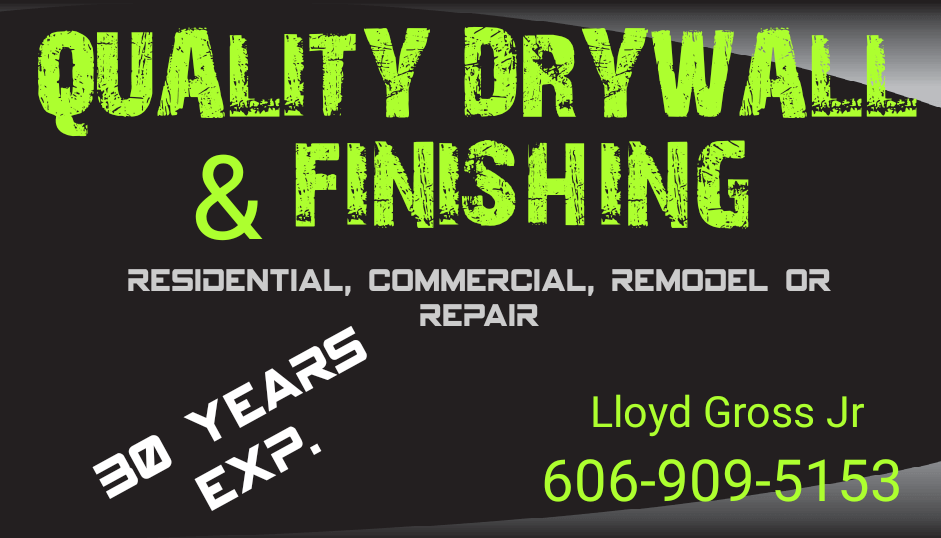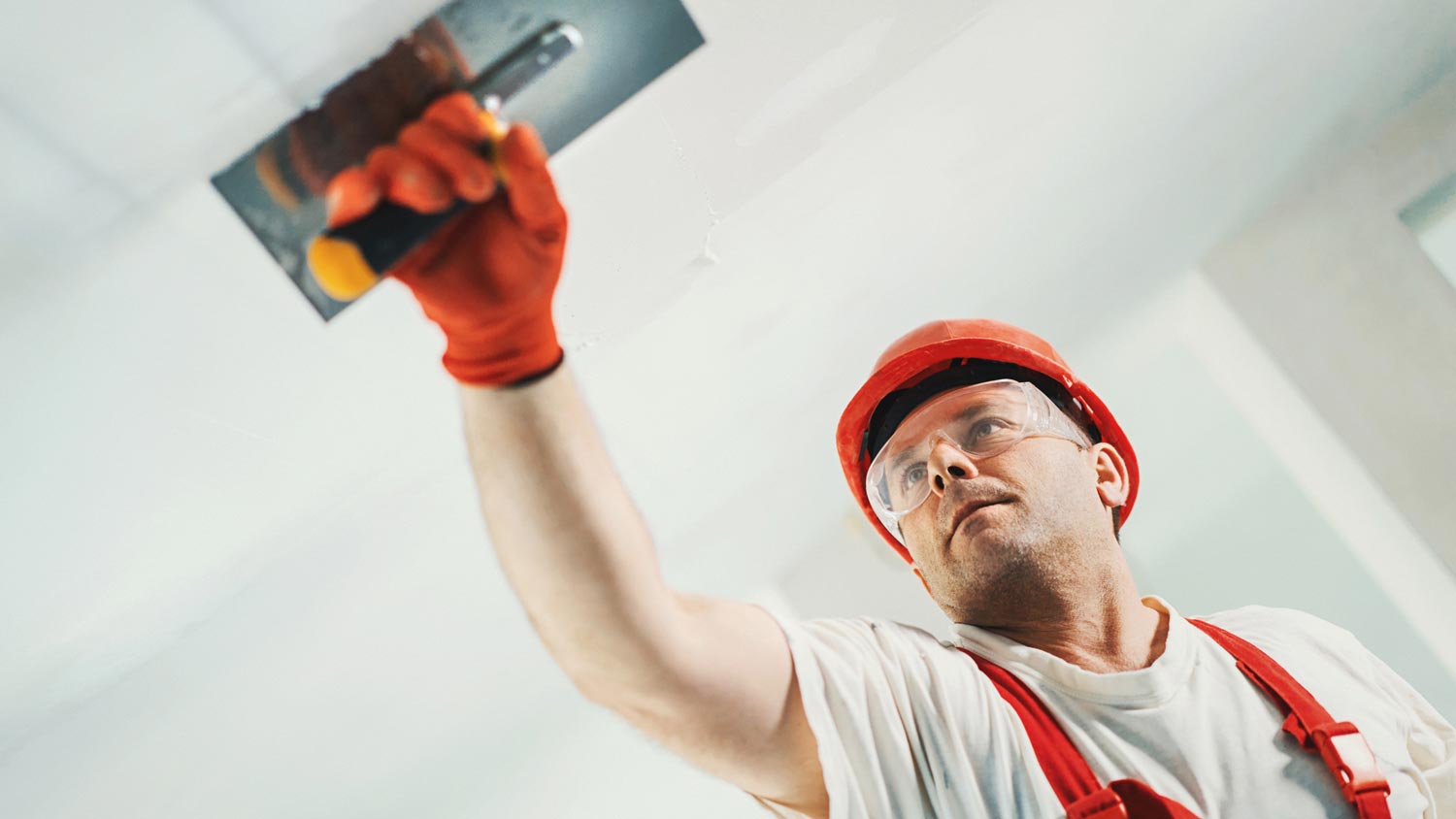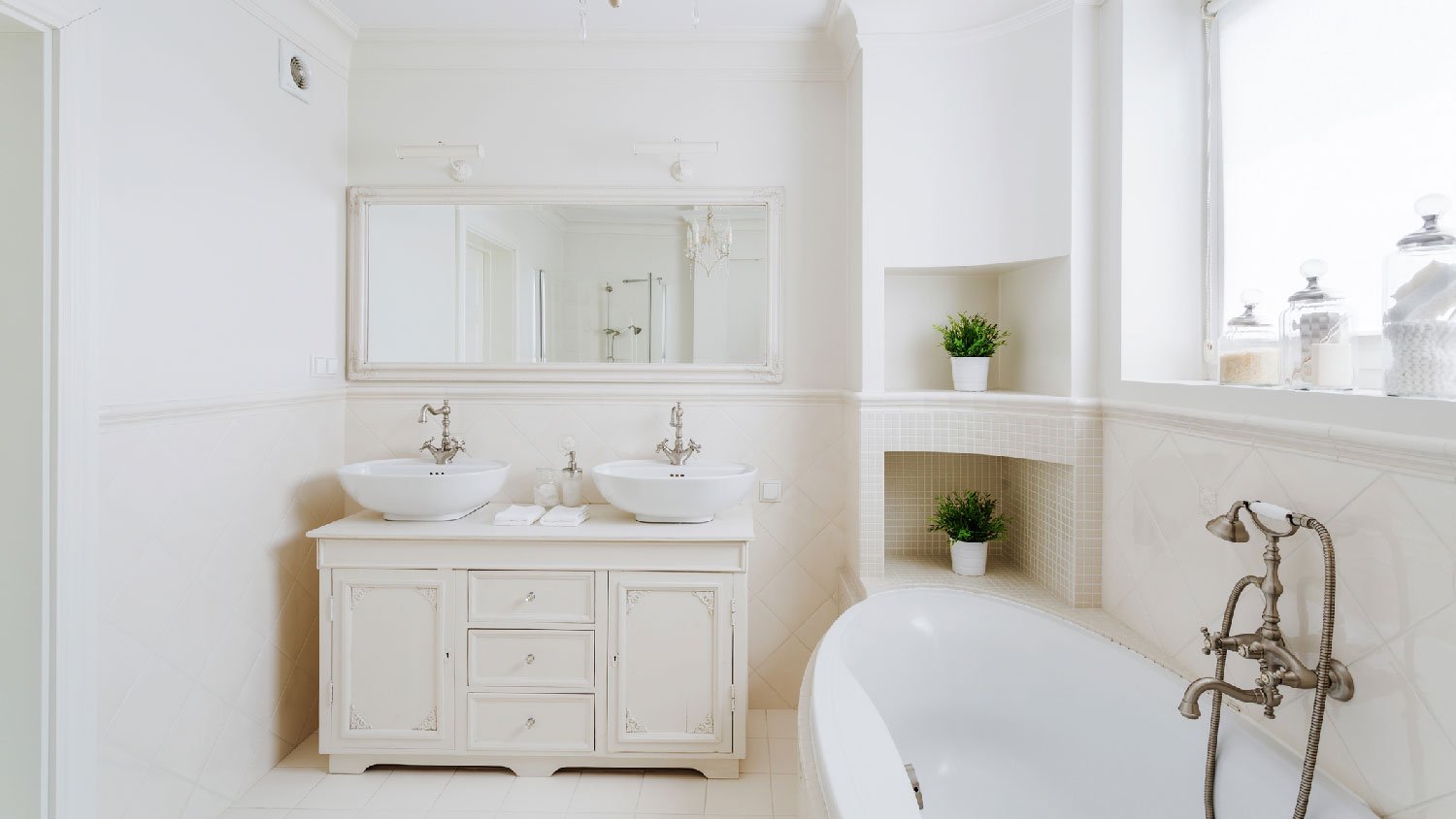
Get matched with top drywall pros in Evarts, KY
Enter your zip and get matched with up to 5 pros
Need a pro for your drywall service project in Evarts, KY?
Verified Reviews for Drywall Service pros in Evarts, KY
*The Angi rating for Drywall Service companies in Evarts, KY is a rating based on verified reviews from our community of homeowners who have used these pros to meet their Drywall Service needs.
*The HomeAdvisor rating for Drywall Service companies in Evarts, KY is a rating based on verified reviews from our community of homeowners who have used these pros to meet their Drywall Service needs.
Last update on November 25, 2025
Find Drywall pros in Evarts
Samantha
Samantha
Hang and Finish Drywall. Measure, mark, and cut drywall panels according to design plans. Fasten panels and tiles to support structures. Patch, trim, and smooth rough spots and edges. Apply tape and sealing compound to cover joints between wallboards.
Hang and Finish Drywall. Measure, mark, and cut drywall panels according to design plans. Fasten panels and tiles to support structures. Patch, trim, and smooth rough spots and edges. Apply tape and sealing compound to cover joints between wallboards.

Quality Drywall and Finishing
Quality Drywall and Finishing
Drywall and Finishing at an affordable price. 20+ years experience
Drywall and Finishing at an affordable price. 20+ years experience
R&T Construction
R&T Construction
New construction and remodeling. Framing, dry wall, trim, painting, all flooring and tile, replacement doors and windows, roofing ,decks, fencing and siding, pressure washing ,demo, additions, and tree removal
New construction and remodeling. Framing, dry wall, trim, painting, all flooring and tile, replacement doors and windows, roofing ,decks, fencing and siding, pressure washing ,demo, additions, and tree removal
Good N True Professional Handyman
Good N True Professional Handyman
We are a professional handyman company with over 26 years servicing the public. No job is to big or small. The only things we do not do is electrical or plumbing.
We are a professional handyman company with over 26 years servicing the public. No job is to big or small. The only things we do not do is electrical or plumbing.
Extra Mile Painting
Extra Mile Painting
Extra Mile is a full service Painting company. We offer both interior and exterior painting and remodeling services to residential, commercial and industrial customers.
Extra Mile is a full service Painting company. We offer both interior and exterior painting and remodeling services to residential, commercial and industrial customers.
Honey did painting n 101 repairs
Honey did painting n 101 repairs
Honey did painting n101 repairs is a professional company , we offering painting interior n exterior ,drywall,framing ,baseboard ,crown molding,door and Windows trim installation and much more
Honey did painting n101 repairs is a professional company , we offering painting interior n exterior ,drywall,framing ,baseboard ,crown molding,door and Windows trim installation and much more
J&H Construction Co.
J&H Construction Co.
General Contractor
General Contractor
The Evarts, KY homeowners’ guide to drywall services
From average costs to expert advice, get all the answers you need to get your job done.

Skim coating drywall is a great alternative to replacement, and is often more affordable. Use this guide to estimate the cost to skim coat walls in your home.

Installing drywall is the most common way to finish your home’s interior. Use this drywall installation cost guide to see what your project is likely to cost.

Drywall texture can create an attractive finish and add dimension to your home’s walls. This guide breaks down the factors that influence the cost to texture drywall.

How long does drywall mud take to dry? In most cases, you need to wait at least 24 hours before moving to the next step of your project. Read on to learn more.

A small leak, flood, or high humidity can dampen your drywall. But can drywall get wet, or if drywall gets wet, is it ruined? Find out in this guide.

The terms drywall and Sheetrock are often used interchangeably, but one is a brand and one is a specific product. Find out which one you need in this guide.
- Saint Charles, VA Drywall pros
- Baxter, KY Drywall pros
- Pennington Gap, VA Drywall pros
- Loyall, KY Drywall pros
- Harlan, KY Drywall pros
- Jonesville, VA Drywall pros
- Cumberland, KY Drywall pros
- Dryden, VA Drywall pros
- Lynch, KY Drywall pros
- Rose Hill, VA Drywall pros
- Appalachia, VA Drywall pros
- Big Stone Gap, VA Drywall pros
- Sneedville, TN Drywall pros
- Duffield, VA Drywall pros
- Ewing, VA Drywall pros
- Whitesburg, KY Drywall pros
- Hyden, KY Drywall pros
- Hazard, KY Drywall pros
- Pineville, KY Drywall pros
- Norton, VA Drywall pros
- Rogersville, TN Drywall pros
- Pound, VA Drywall pros
- Surgoinsville, TN Drywall pros
- Harrogate, TN Drywall pros
- Flat Lick, KY Drywall pros
- Mooresburg, TN Drywall pros
- Treadway, TN Drywall pros
- Mount Carmel, TN Drywall pros
- Church Hill, TN Drywall pros
- Wise, VA Drywall pros
- Drywall Insulation in Evarts
- Wall Repair in Evarts
- Painting in Evarts
- Plaster Plaster Repair in Evarts
- Popcorn Ceilings in Evarts
- Contractor in Evarts
- Asbestos Removal in Evarts
- Bathroom Fan Installation in Evarts
- Tv Mount Install in Evarts
- Wallpaper Removal in Evarts
- Remodeling Basements in Evarts
- Interior Painting in Evarts
- Mold Testing And Remediation in Evarts

